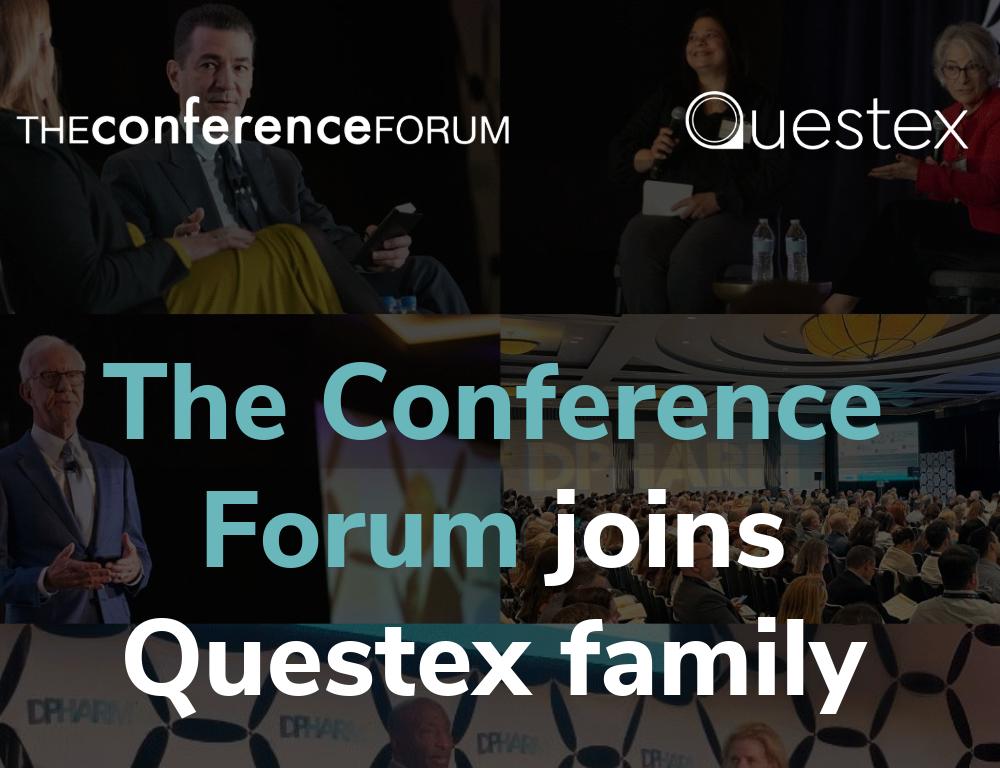Janssen Clinical Innovation Exec on Reimagining Clinical Trials from Start to Finish
Monique Adams, PhD, provides useful strategies for assessing where, and how, innovation can most benefit an aspect of clinical research. She is Director, Clinical Innovation Lead, at Janssen Research and Development, leading the strategy development and implementation plans for innovation initiatives.

In your work, what does “innovation” mean to you? What does it look like?
Our organization is really focused on clinical trial innovation, and when we say “innovation,” we really mean new and novel clinical trial capabilities not already utilized in a clinical trial setting. It may be utilized in a healthcare setting, it may be utilized in another industry, but it has not been utilized and validated in a clinical trial setting.
So that if it falls into that category, then it comes to our group and we look at and assess that capability: does this meet the needs of our teams or does it address a gap or a challenge? The first thing that we do is have internal discussions. If we decide we believe that there are some possibilities with that capability, we do initial proof of concepts. There we validate if it can really address the challenges of the gaps. And then if it meets that criteria, and we feel like it is something that will be beneficial, either to our own organization, patients, sites, etc, we then work to embed it and make it a normal offering for our clinical teams.
How are problem areas or innovation-applicable areas identified? Is that bottom-up or top-down?
It’s a mix. It could be our clinical teams, or our business partners, coming to us and saying, “We have this challenge; we need you to help us find a solution to address it.” But it’s also incumbent on us to really know what their challenges are, and to have strong connections with them so that we understand not just today’s current challenges but what we believe are going to be future challenges. We also scan the external landscape for what we think are maybe some potential capabilities that can address problems.
Sometimes we’re coming to them saying that we believe that this solution can address the challenge or a gap that you have, and show why it may be of value. That’s why our group also has resources that can manage these proof of concepts, so that we can at least get some initial information before we are ready to bring it to the clinical teams. We will sometimes partner externally. Our pilots are not always done internally; we may partner with an academic institution to do the initial pilot, to get more information, data and evidence to provide supporting documentation to our clinical teams.
"Innovation is not just technology. It is this process: reimagining and rethinking how we can conduct these studies more effectively, more efficiently."
What are some solutions or initiatives that you can share with us?
Right now, we have three targeted focus areas that, for the most part, our projects fall under. We have digital health, which looks at technologies – sensors, wearables, digital health solutions. We also have patient data for research, looking at how to reuse patient data. It’s data oftentimes that is not coming from a clinical trial. It may be coming from claims data, could be coming from medical records. It’s trying to take data that exists in other forms and try to make some sense of it. Maybe it can help us learn about where we can find the most appropriate patients for our clinical trials. Maybe we can learn more about who is most likely to benefit from this therapy. Understand who is most likely to be retained and adhere to the medications and clinical trials. The third area is called novel clinical trial models. This is anything that is not the traditional brick-and-mortar study site. But it’s not even just the physical setting: it’s anything that is not the normal way you conduct a clinical trial. We’re really looking at novel and unique ways to be able to conduct, manage and support clinical trials.
Often there’s overlap between these three different areas. If we have a novel trial model in a completely remote setting, in order for that to really be effective, you often will need some type of digital sensor to be able to assess how the patient is progressing on the therapy. Oftentimes we utilize maybe one or two or all three of our focus areas to support our innovation initiatives.
You interviewed Marty Yudkovitz, formerly of Disney, about lessons learned from other industries. What are the industries that you look at for inspiration on innovation?
I don’t really think that it is any one particular industry. There’s a lot of things that can be learned from our CROs, for example. based upon the learnings and best practices they share with us.
Oftentimes, when people hear “innovation,” they tend to think of mostly digital health, such as sensors, wearables, technology, but innovation is not just technology. It is this process: reimagining and rethinking how we can conduct these studies more effectively, more efficiently. Sometimes it has nothing to do with technology, it has everything to do with challenging ourselves to think differently and beyond the way that we normally approach trials towards what will be most effective for patients and for sites.
When you’re implementing new initiatives, how are you defining and assessing success?
That’s the one thing that’s important: defining it on the front end. The first thing that we need to do is really understand the business needs, gaps or challenges. Early on in the process, it’s perhaps more qualitative. When you’re in that ideation stage, you’re thinking about possible solutions and what the ultimate solution is going to be that will solve that problem. Once you decide you want to explore a particular capability, you first design a first proof of concept. This is when you identify upfront key performance indicators. They can be qualitative, quantitative and some subjective measures, but they need to be identified prior to the start of the study. Then you conduct an assessment, get data and evaluate if the capability met the needs.
We also have internal stage gates and internal governance, so we can gather insights from a different perspective. Because the perspective from a clinical trial innovation team may be very different versus legal, privacy, regulatory, etc, weighing in. We need to evaluate if this is a capability that can be expanded globally, or is the usability limited to the US or certain regions?
How are you addressing the potential for broader applicability in solutions?
Ultimately, we are not required to have a solution that is going to work for every scenario, or every country. What we’re providing is options. It may be an option that really works in a very narrow use case. That doesn’t mean that it’s not valuable.
But even though you have your pre-identified measures, you learn something from that assessment. You may have had pre identified measures, and the assessment may not have met any of those, but it still was enough for us to say, “We want to do another study,” perhaps with other sites or in other countries or in a different use case.
A lot of us are used to having a lot of information upfront, and pushing through no matter what. But we want to establish the mindset that it is ok to fail, because we learn from failures. We want to fail early, we want to fail often. You have to be comfortable with that gray area; you’re not going to have all the answers when conducting the initial pilot. You’re going to learn from that pilot, and you’re going to reiterate often, from the information that we learned from that initial study.
"There must be options. We can’t say, “It’s going to be 100% remote,” because that doesn’t work for every clinical trial or every patient or every visit."
You were on the DIA committee for its “Diversity, Equity and Inclusion in the Drug Development Lifecycle” meeting. How can we apply innovation to make sure that we are creating truly representative and equitable trials?
When we think about the future, it really is the focus on personalized clinical trials. And if you have personalized clinical trials, you will address equity and inclusion. Right now, we are very focused on having clinical trials at large academic centers, which is not necessarily where patients get their treatment, especially not diverse patients. It is vital that we ensure that our clinical trials are diverse, that there’s equity in terms of health care, and that people are included.
Oftentimes now, we have an academic center, and say, “It’s in an urban city, and so they’re going to be able to recruit diverse patients.” That’s not always what happens. Just putting in a site in the middle of Chicago or New York, for example, doesn’t mean you will get diverse patients. That example is focusing on urban environments, but what about rural environments? Diversity, equity, inclusion means everybody. It’s ensuring that those clinical trial participants look like the patients that you’re going to ultimately be serving when that drug becomes commercialized.
And so the way that you ensure diversity and inclusion is by thinking about, for example, alternate points of care. When we think about direct-to-participants, we are trying to meet our clinical trial participants where they are. If they are using local care centers, can we utilize those sites to be clinical trial sites? There’s at-home testing, where people can be in their homes and be part of a clinical trial, and you can have home health nurses who will go to the patient’s home where they are to assess them.
There must be options. We can’t say, “It’s going to be 100% remote,” because that doesn’t work for every clinical trial or every patient or every visit. We need to have options, and ensure trials are flexible in terms of how they’re structured and how they’re designed, and to allow flexibility so that it meets the needs of that particular participant.
We’ve talked about reusing patient data to identify where patients are. Use that same information not only to look at various biomarkers, but also demographics. If you’re trying to target certain populations, make sure that you are assessing that that site has those demographics, and then target those sites.
And then if those sites have the appropriate population, but they don’t really have the infrastructure to conduct clinical trials, then provide them with that support. Provide them with the resources, whether it is an on-site clinical coordinator, or vendors who offer sites-on-demand services, etc. It’s about thinking beyond how we normally conduct clinical trials.
For more information on DPHARM: Disruptive Innovations to Modernize Clinical Research, visit DPHARMconference.com.







